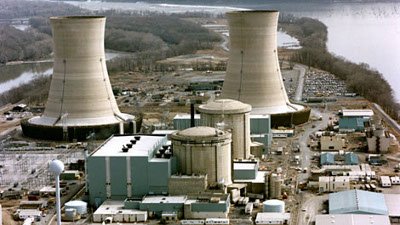
Ep 7. Minutes to Meltdown: Three Mile Island
- March 19, 2011
In Season 2011, Episode 7 of National Geographic Documentaries, titled "Minutes to Meltdown: Three Mile Island," viewers are taken on a gripping journey through one of the most significant nuclear accidents in history. On March 28, 1979, a series of mechanical failures and human errors led to a partial meltdown of the reactor core at the Three Mile Island nuclear power plant in Pennsylvania, USA.
Through interviews with key players involved in the disaster, including former plant workers and government officials, as well as never-before-seen footage and photos, the episode provides a thorough and eye-opening analysis of the events that transpired over the course of the accident. The episode begins by setting the stage with a brief history of nuclear power and the construction of the plant, before diving into the specific events that led up to the meltdown.
As the audience follows the narrative of what happened, it is revealed that a stuck-open valve in the reactor caused coolant to escape, which led to severe overheating. Despite numerous warnings and safety mechanisms, it soon became clear that the situation was spiraling out of control. The engineers, management, and government officials were all trying to understand the nature of the crisis and how best to contain it. Moreover, in the middle of the emergency, experts had conflicting ideas as to how bad the accident was and how to respond to it. The episode explores these debates in detail and shows how certain decisions or lack thereof resulted in the disaster spiraling out of control over the course of several days.
The episode achieves a sense of urgency and tension as it portrays the crucial moments that led to the meltdown. The audience is reminded of the human impact of the disaster as the episode switches between authorities and residents. As evacuations were ordered, the chaos and confusion on the ground were reported. Interviews with those most affected by the accident paint a vivid picture of the fear and anxiety that the disaster instilled.
It also shows how the national media added to the crisis by leaking misleading information, which led to further confusion and chaos. The media's portrayal of the situation as an imminent disaster, despite it being contained only added to the public panic.
The episode concludes with the aftermath, and how the worst-case scenarios feared by many were thankfully averted, but with long-term environmental and mental health disturbances. It is emphasized that the disaster was a turning point in nuclear energy production across the world. The accident revealed flaws in the practice whose effects are felt even today. The episode leaves viewers with a newfound appreciation of how complex and potentially devastating nuclear energy can be, making the need for strict safety regulations more important than ever.
Overall, the episode is an engrossing and thought-provoking recapitulation of the disaster. The episode explains the root causes and human errors that led to the disaster while navigating the regulatory and ethical response. It's a fascinating insight into the world's least understood and most controversial forms of power generation, making it a must-watch for anyone interested in the evolution and potential consequences of how we generate power.
